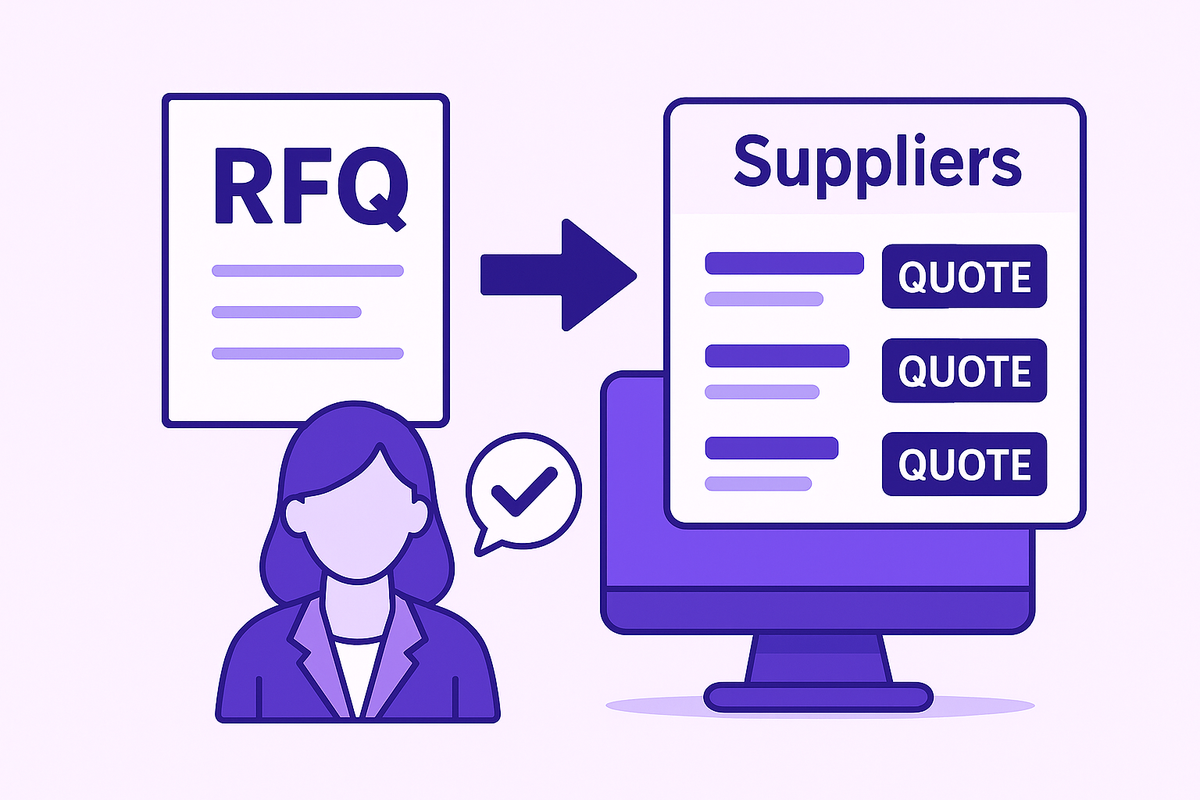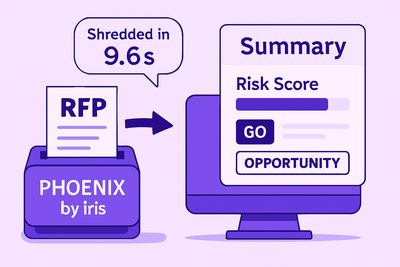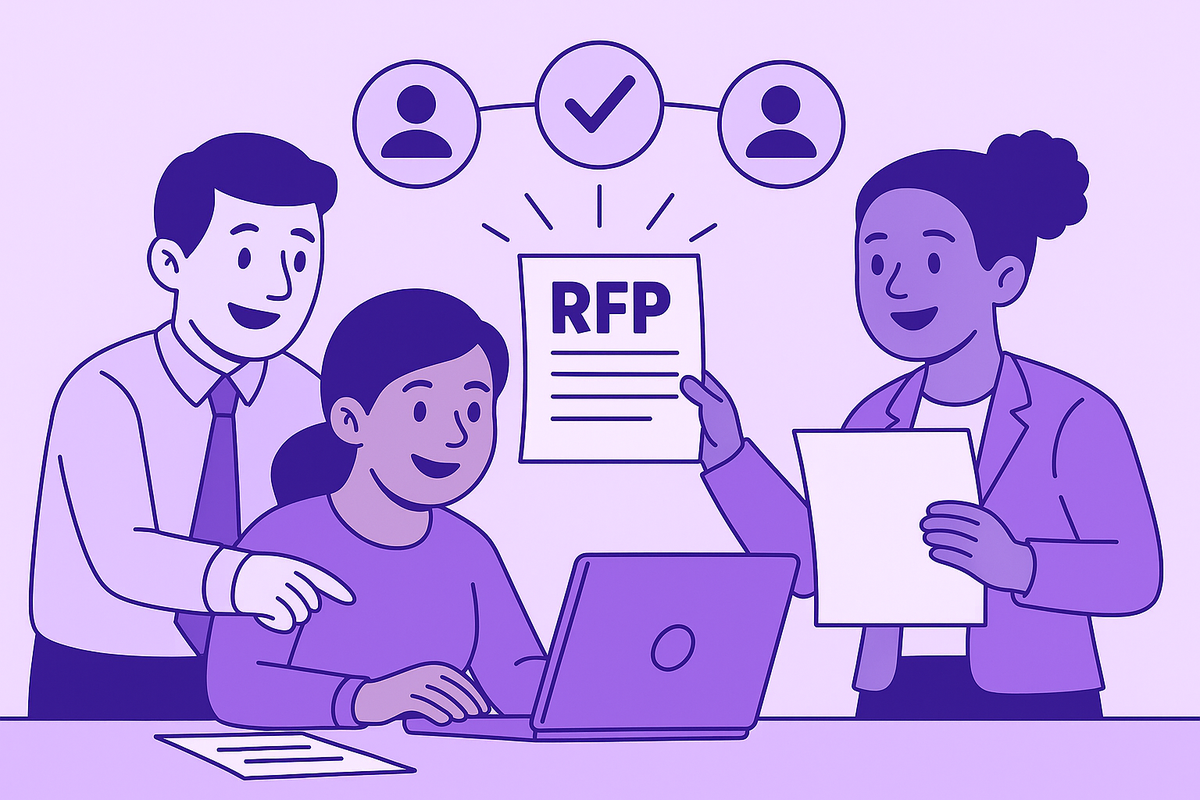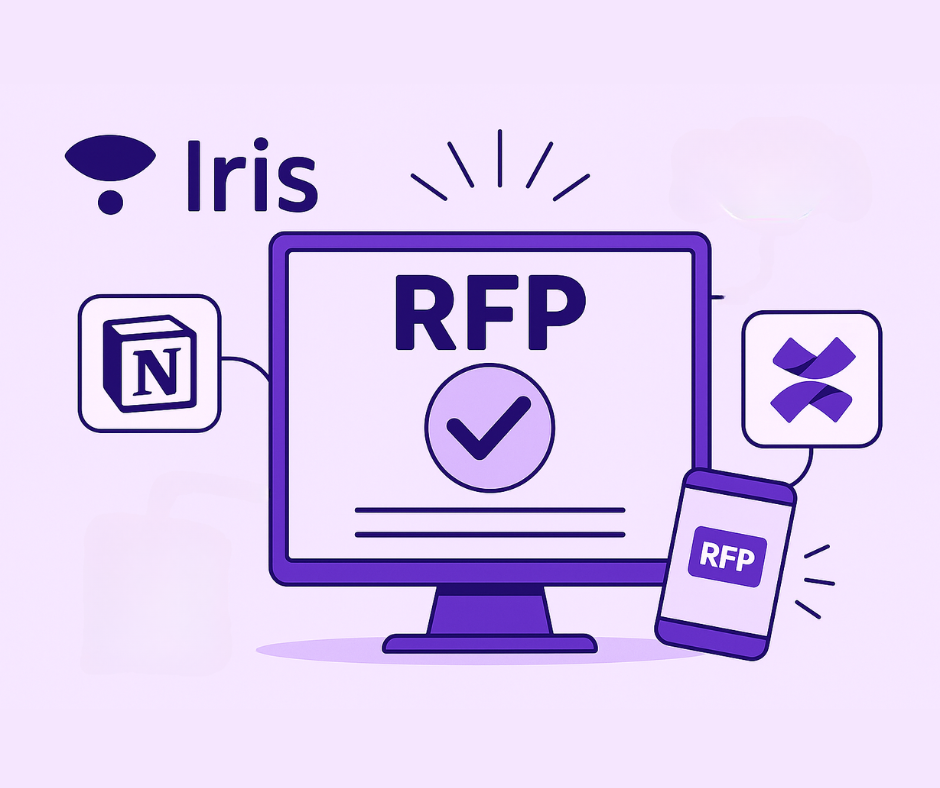Understanding the RFQ Process in Procurement
August 8, 2025
By
Evie Secilmis

An RFQ, or Request for Quote, is a formal document that a company uses to solicit price quotes from suppliers for specific products or services. Unlike a Request for Proposal (RFP), which focuses on the broader solution to a problem, an RFQ is all about price. It's a straightforward way to gather pricing information and compare different suppliers based on their quotes. This process allows businesses to ensure they are making informed purchasing decisions by comparing costs and terms from various vendors.
The RFQ is often used when the specifications for the products or services are clear and well-defined. This ensures that the primary variable in choosing a supplier is the price, making it easier for businesses to determine the most cost-effective option. By focusing on price, companies can streamline the procurement process, reducing the time and resources needed to evaluate multiple offers. As a result, the RFQ is an invaluable tool for businesses aiming to maximize their procurement efficiency.
Why is the RFQ Process Important?
The RFQ process is vital for several reasons:
- Cost Efficiency: By collecting multiple quotes, businesses can ensure they are getting the best possible price for their needed goods or services. This competitive pricing can significantly impact a company's bottom line, allowing for better budget allocation and potentially increasing profit margins.
- Transparency: It fosters transparent communication between buyers and suppliers, ensuring everyone is on the same page regarding expectations. Clear communication helps prevent misunderstandings that could lead to delays or additional costs, fostering a more cooperative relationship between both parties.
- Competition: Encouraging multiple suppliers to submit quotes promotes healthy competition, potentially leading to better deals. Suppliers are motivated to offer their best prices and terms to win the business, which can lead to innovative solutions and improved service levels.
- Standardization: Using a standardized RFQ template streamlines the process and ensures consistency in how information is gathered and compared. This consistency allows procurement teams to evaluate offers more effectively, ensuring that decisions are based on comparable data and reducing the risk of errors.
The RFQ Process: Step-by-Step
Step 1: Define Your Needs
Before you can request quotes, you need to know precisely what you're looking for. Define the specifications, quantities, and any other requirements for the goods or services you need. This clarity will help suppliers provide accurate quotes. By investing time in this initial step, you can avoid costly changes or misunderstandings later in the process.
In addition to basic specifications, consider any potential future needs or scalability requirements. This foresight can guide suppliers in offering solutions that not only meet your current demands but also accommodate future growth or changes, providing long-term value.
Step 2: Prepare the RFQ Document
A well-prepared RFQ document is key to getting the information you need from suppliers. Here's what to include:
- Introduction: Briefly explain your company's background and the purpose of the RFQ. This context helps suppliers understand your business environment and tailor their responses accordingly.
- Specifications: Clearly outline the product or service requirements, including any technical specifications. Detailed specifications prevent ambiguity and ensure suppliers know exactly what is expected.
- Quantity: Specify how much you need. Accurate quantity information allows suppliers to calculate pricing and logistics accurately.
- Delivery Requirements: Include deadlines and delivery terms. Clear delivery expectations help suppliers assess whether they can meet your timeline.
- Submission Instructions: Provide detailed instructions on how and when suppliers should submit their quotes. Clear instructions reduce the likelihood of errors in submission, ensuring a smoother process.
- Evaluation Criteria: Outline the criteria you'll use to evaluate the quotes. By providing this information upfront, suppliers can tailor their proposals to meet your specific needs, improving the quality of the responses.
Step 3: Distribute the RFQ
Once your RFQ document is ready, distribute it to a list of potential suppliers. You can send it via email, post it on your procurement portal, or use a procurement software platform. Ensure you give suppliers enough time to prepare and submit their quotes. This adequate lead time allows suppliers to thoroughly review your requirements and craft competitive, well-considered offers.
Consider reaching out to both existing and new suppliers. Engaging with a diverse range of suppliers can introduce new perspectives and options, potentially uncovering more cost-effective or innovative solutions than sticking with familiar vendors.
Step 4: Receive and Analyze Quotes
After receiving the quotes from suppliers, it's time to evaluate them. Compare the quotes based on price, delivery timelines, payment terms, and any other criteria you've set. This analysis will help you identify the best supplier for your needs. A thorough evaluation ensures that all aspects of the supplier offers are considered, not just the cost.
Use a scoring system or evaluation matrix to objectively assess each quote against your criteria. This structured approach can help prevent bias and ensure that the decision is based on comprehensive analysis rather than subjective impressions.
Step 5: Negotiate and Finalize
Once you've identified the top quotes, you may want to negotiate further with the suppliers to secure better terms or prices. After finalizing negotiations, select the supplier that offers the best overall value and proceed with the procurement process. Negotiation can be a powerful tool to refine offers, potentially securing more favorable terms that align better with your business needs.
Ensure that all agreed terms and conditions are documented clearly in a contract. This documentation protects both parties by providing a reference point for what has been agreed upon, reducing the likelihood of disputes.
Tips for an Effective RFQ Process
Use a Standard RFQ Template
A standardized RFQ template can save time and ensure consistency. It helps suppliers know what to expect and provides you with a uniform way to evaluate their responses. This standardization simplifies the process for both parties, reducing the potential for errors and misunderstandings.
By using a template, you can also ensure that all necessary information is included, reducing the risk of overlooking important details that could affect the procurement outcome.
Be Clear and Detailed
The more detailed and clear your RFQ is, the better the responses you'll receive. Ambiguity can lead to miscommunication and inaccurate quotes. Clear RFQs facilitate more accurate and relevant supplier responses, which can lead to more effective decision-making.
Consider including visuals or diagrams if applicable. These can help convey complex requirements more effectively, ensuring suppliers have a full understanding of what is needed.
Set Realistic Deadlines
Give suppliers enough time to prepare their quotes. Rushed deadlines may result in incomplete or higher-priced quotes due to limited preparation time. Adequate timeframes allow suppliers to provide their best offers, as they can thoroughly assess their capacity to meet your needs.
Factor in potential delays when setting deadlines to ensure you have a buffer for unforeseen circumstances. This proactive approach can help keep the procurement process on schedule.
Communicate Openly
Keep the lines of communication open with suppliers. If they have questions, provide timely responses to ensure they can submit accurate quotes. Open communication builds trust and helps suppliers feel more comfortable reaching out for clarifications, ultimately leading to better proposals.
Establish a single point of contact for suppliers to streamline communication and ensure consistent messaging throughout the RFQ process.
Leverage Technology
Consider using procurement software to automate and streamline the RFQ process. These tools can help manage supplier lists, track submissions, and analyze quotes more efficiently. Technology can also provide insights into supplier performance and procurement trends, aiding in strategic decision-making.
Automation can reduce administrative burdens, allowing procurement teams to focus on more strategic aspects of supplier selection and relationship management.
Common Pitfalls in the RFQ Process
Lack of Clarity
Vague RFQs can lead to confusion and varied quotes that are difficult to compare. Always aim for clarity and detail in your RFQ documents. Clear RFQs help ensure that all suppliers are working from the same set of expectations, leading to more comparable and relevant quotes.
Regularly review and update your RFQ templates and processes to incorporate feedback and address any recurring issues or ambiguities.
Overlooking Supplier Qualifications
Focusing solely on price can be a mistake. Consider the supplier's reputation, reliability, and ability to meet your needs within the required timeline. A supplier's ability to consistently deliver quality goods or services on time can be just as important as their pricing.
Conduct a thorough assessment of potential suppliers' capabilities and past performance to ensure they align with your business needs and values.
Failing to Follow Up
After distributing the RFQ, don't forget to follow up with suppliers. A gentle reminder can ensure timely submissions and show your interest in their participation. Follow-up communication can also provide an opportunity to clarify any last-minute questions or concerns suppliers may have.
Schedule regular check-ins with suppliers throughout the RFQ process to maintain engagement and address any issues promptly.
Conclusion
The RFQ process is a fundamental part of procurement that can significantly impact your business's bottom line. By understanding the RFQ process and implementing best practices, you can ensure a smooth procurement experience that delivers the best value for your organization. With clear communication, effective tools, and a detailed RFQ template, your business can secure the goods or services it needs at competitive prices. Investing in a robust RFQ process not only enhances procurement efficiency but also builds stronger supplier relationships and fosters a culture of continuous improvement within your organization.
By continually refining your RFQ strategy, you position your business to adapt to changing market conditions and supplier landscapes, ensuring sustained competitive advantage and operational excellence.
Want to understand what an RFQ is? Check out the article: What is an RFQ? Meaning, Use & Sample Template
Share this post
Link copied!





















